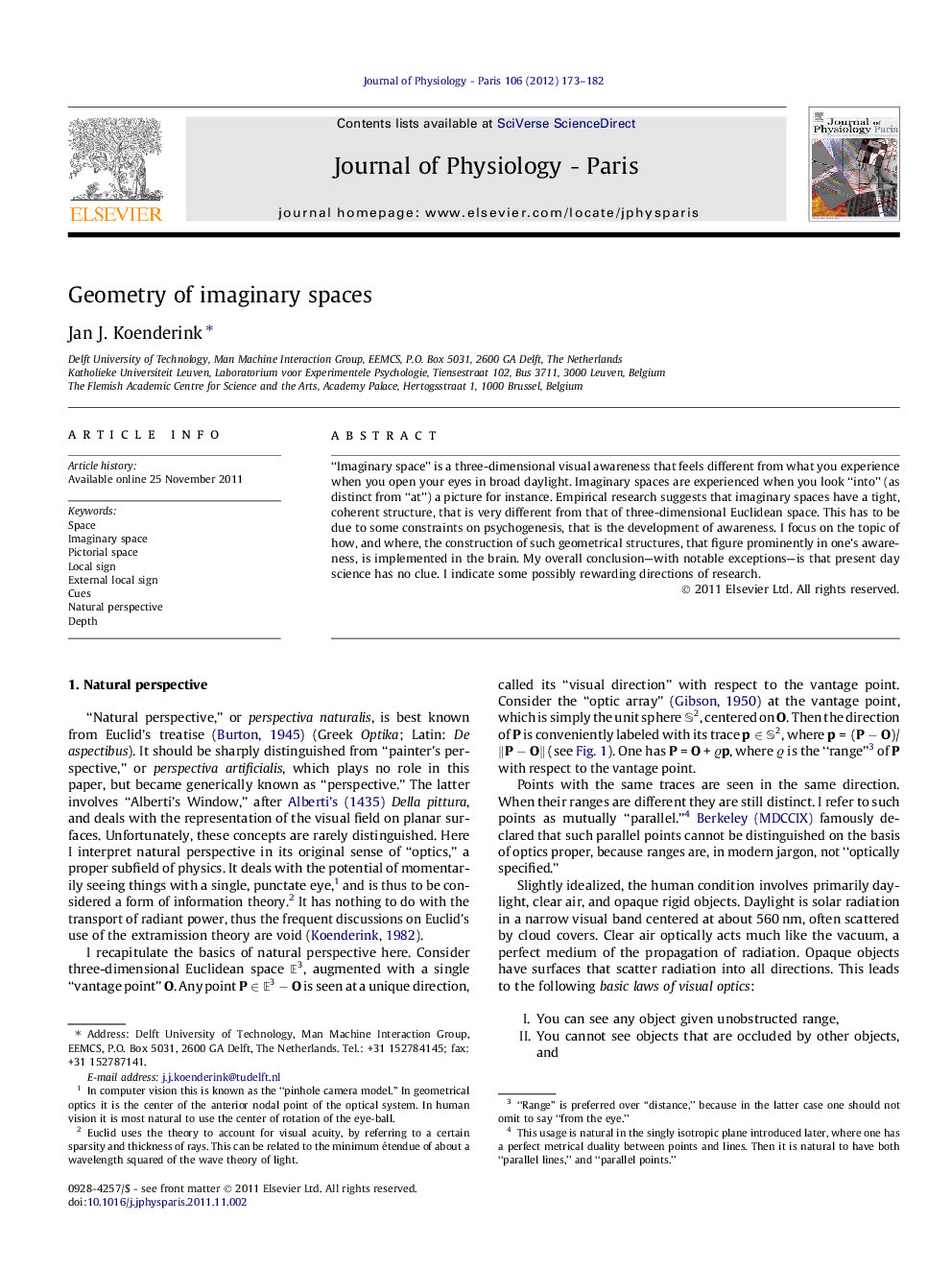| Article ID | Journal | Published Year | Pages | File Type |
|---|---|---|---|---|
| 2842415 | Journal of Physiology-Paris | 2012 | 10 Pages |
“Imaginary space” is a three-dimensional visual awareness that feels different from what you experience when you open your eyes in broad daylight. Imaginary spaces are experienced when you look “into” (as distinct from “at”) a picture for instance. Empirical research suggests that imaginary spaces have a tight, coherent structure, that is very different from that of three-dimensional Euclidean space. This has to be due to some constraints on psychogenesis, that is the development of awareness. I focus on the topic of how, and where, the construction of such geometrical structures, that figure prominently in one’s awareness, is implemented in the brain. My overall conclusion—with notable exceptions—is that present day science has no clue. I indicate some possibly rewarding directions of research.
► When looking “into” pictures an imaginary 3D space appears in visual awareness. ► Imaginary space have a tight geometrical structure. ► Methods to empirically sample the structures of imaginary spaces are available. ► The non-Euclidean structure of pictorial spaces can be deduced from simple first principles.
